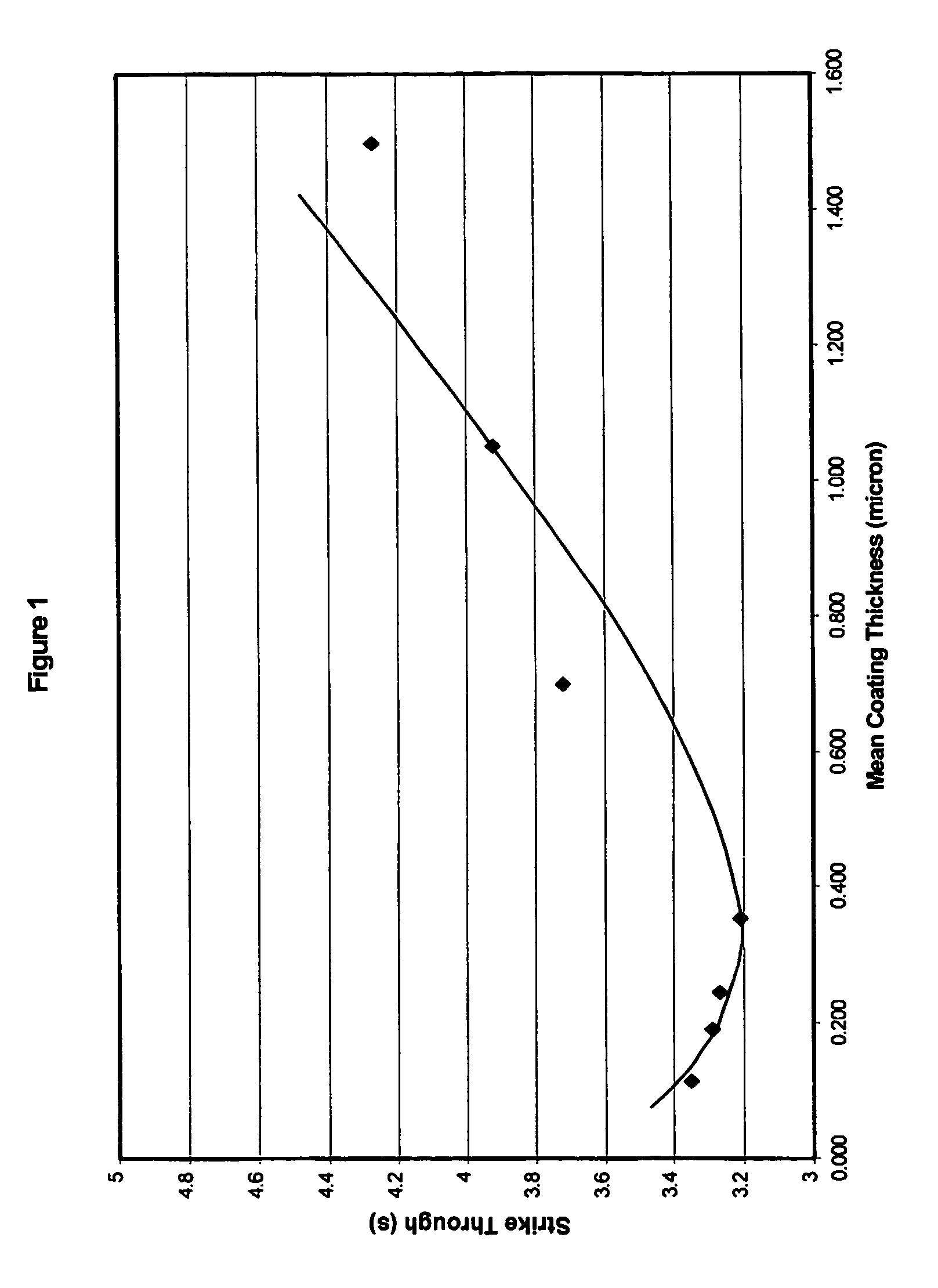Absorbent hygiene product
a technology of absorbent and hygienic products, applied in the direction of sanitary towels, bandages, layered products, etc., can solve the problems of reducing the ability of the article to absorb and retain fluid, and achieve the effect of easy calculation of the surface area
- Summary
- Abstract
- Description
- Claims
- Application Information
AI Technical Summary
Benefits of technology
Problems solved by technology
Method used
Image
Examples
example 1
[0109] A continuous strip of the non-woven fabric, which was prepared using the method described above in relation to the determination of the conversion factor, was impregnated with a solution formulated as follows (percentage by weight) by passing the fabric around rollers located in a chamber with an atmosphere of nitrogen, so that the fabric passed through a solution consisting of (proportions in weight percent):
Acrylic acid30.00%Benzophenone 0.25%Lutensol ON-70 surfactant 0.50%Deionized water69.25%
[0110] The mole ratio of acrylic acid to benzophenone was about 150.
[0111] The impregnated fabric, still in a nitrogen atmosphere, was passed between four medium pressure mercury lamps, positioned parallel to one another, two on each side of the chamber, the chamber at that point being provided by quartz windows. Each of the lamps had a power output of 79 W.cm−1 and was positioned 10 cm from the fabric. Each lamp produced a parallel beam having a width of 10 cm. The total exposure ...
example 2
[0114] The non-woven fabric described above was graft polymerized with acrylic acid according to the procedure described in Example 1 with the following differences. The lamp power was 120 W.cm−1, the irradiation time was 7 seconds and the impregnation solution was the same as that used in the method described above for determining the conversion factor
[0115] The properties of the graft polymerized fabric are set out below, and compared with the corresponding properties with of the polypropylene fabric starting material.
PropertyUngraftedGraftedIon exchange capacity (meq · g−1)00.96Weight of grafted monomer per gram of grafted00.079substrateVertical wicking height (mm)031Weight loss (%)0.380.23Strike through (s)29.772.86Surface tension of extract water (mN · m−1)7269.1Mean graft coating thickness (μm)00.26
[0116] As can be seen the graft copolymerized fabric produced in this example shows much lower weight loss and the extract water shows a significantly lower surface tension reduc...
example 3
[0117] A strip of fabric made according to Example 2 was converted into the potassium form by passing the fabric through a 10% w / w potassium hydroxide solution at room temperature. The total immersion time was about 6 seconds. The fabric was then washed to remove unreacted components and dried on two rollers at 60° C.
[0118] The properties of the treated fabric are set out below, and compared with the corresponding properties of the fabric of Example 2.
PropertyExample 2Example 3Vertical wicking height (mm)3168Weight loss (%)0.230.95Strike through (s)2.862.98Surface tension of extract water (mN · m−1)69.167.9
PUM
| Property | Measurement | Unit |
|---|---|---|
| Percent by mass | aaaaa | aaaaa |
| Thickness | aaaaa | aaaaa |
| Thickness | aaaaa | aaaaa |
Abstract
Description
Claims
Application Information
 Login to View More
Login to View More - R&D
- Intellectual Property
- Life Sciences
- Materials
- Tech Scout
- Unparalleled Data Quality
- Higher Quality Content
- 60% Fewer Hallucinations
Browse by: Latest US Patents, China's latest patents, Technical Efficacy Thesaurus, Application Domain, Technology Topic, Popular Technical Reports.
© 2025 PatSnap. All rights reserved.Legal|Privacy policy|Modern Slavery Act Transparency Statement|Sitemap|About US| Contact US: help@patsnap.com



